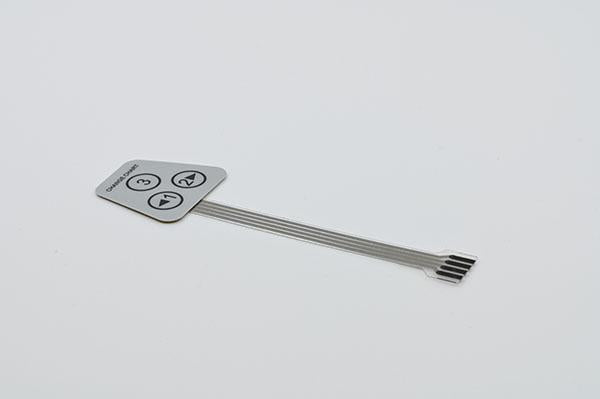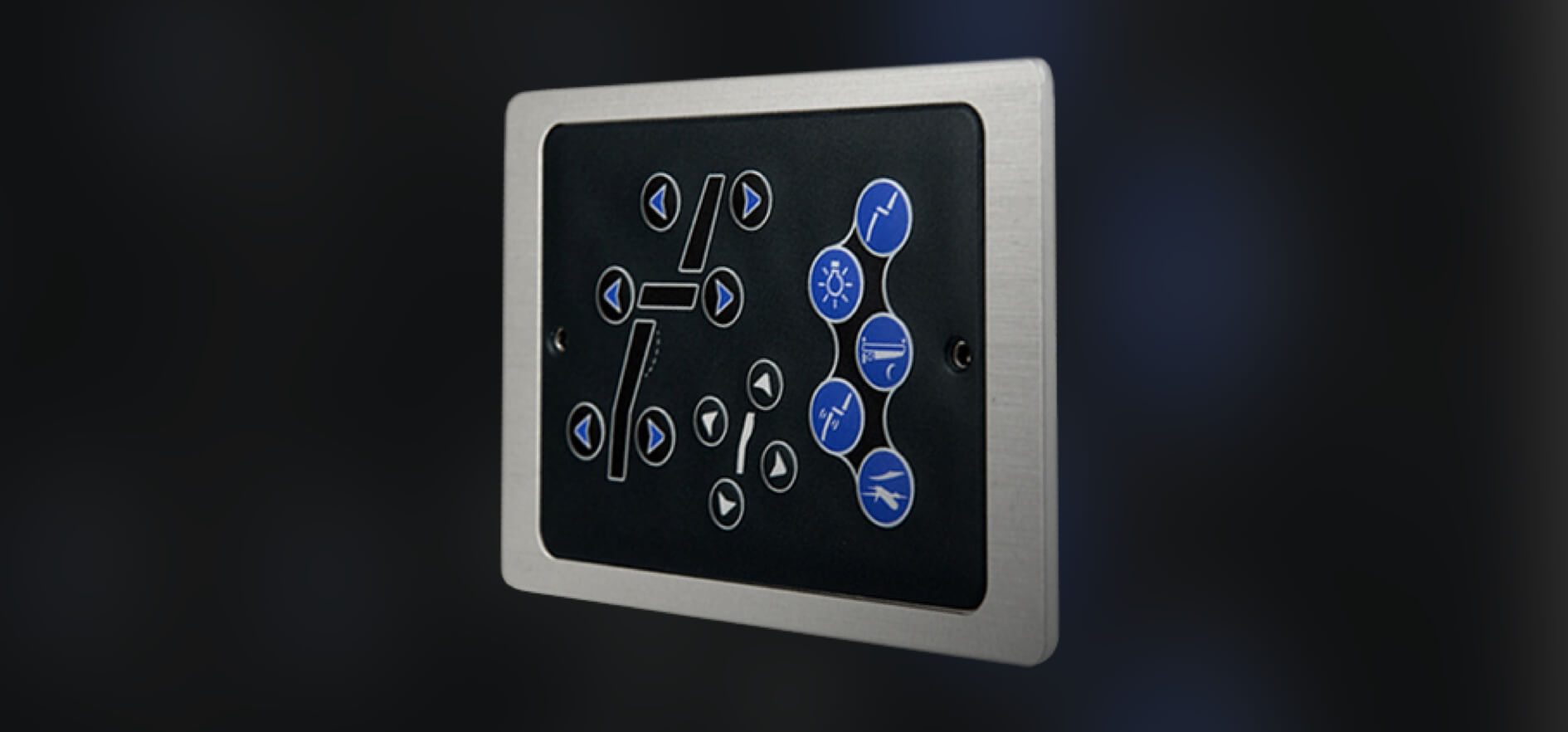Find out about the Innovative Production Techniques Behind Membrane Switches
Find out about the Innovative Production Techniques Behind Membrane Switches
Blog Article
Membrane Layer Switches Explained: A Comprehensive Guide to Their Advantages
Membrane layer switches over represent a functional and sophisticated option for developing user interfaces across a range of markets. Their multilayered layout not just ensures functionality through easy pressure however additionally supplies substantial advantages, such as sturdiness and modification. As sectors significantly look for reliable and dependable control user interfaces, recognizing the specific advantages and applications of membrane layer switches over becomes crucial. Nevertheless, the ins and outs of their style and application present unique challenges that merit closer exam. What elements should be considered to totally utilize their capacity in contemporary applications?
What Are Membrane Layer Switches?

When pressure is applied to the membrane layer button, the layers make contact, completing an electrical circuit. This straightforward mechanism allows for a variety of applications, from consumer electronics to industrial machinery. Membrane switches are commonly made to be resistant and waterproof to dust and contaminants, making them appropriate for atmospheres where durability is important.
Furthermore, the versatility of the products made use of in membrane layer switches over promotes cutting-edge designs that can conform to various shapes and dimensions. This adaptability contributes to their popularity in varied areas, consisting of clinical tools, auto controls, and home devices. On the whole, membrane layer changes stand for a critical component in modern-day individual interface modern technology, connecting the gap between users and electronic systems.
Secret Advantages of Membrane Buttons
Amongst the myriad of interface alternatives readily available, membrane layer changes stick out for their distinct combination of benefits. One of the key advantages is their light-weight and portable style, which enables for integration right into a large range of gadgets without including substantial mass. This is especially helpful in applications where space is restricted.
In addition, membrane switches deal toughness and resistance to environmental variables. They are commonly built with materials that can hold up against wetness, dust, and numerous chemicals, making them appropriate for rough problems. This resilience adds to a longer life-span compared to traditional mechanical buttons.
Another substantial advantage is the convenience in personalization. Membrane buttons can be published with different graphics, shades, and structures, enabling tailored layouts that meet details branding or functional needs. This flexibility reaches the number of layers and circuit choices, offering designers with multiple setups.
Moreover, the responsive responses offered by some membrane layer switches improves individual experience, making them more user-friendly to run. Lastly, the simplicity of cleansing and upkeep even more solidifies membrane layer buttons as a practical option in both customer and commercial applications. Membrane Switches. On the whole, these key advantages make them a preferred option for many designers and producers
Applications in Different Industries
Just how do membrane layer buttons locate their area throughout varied sectors? Their versatility and functionality make them essential elements in markets ranging from health care to consumer electronics. In medical devices, membrane switches are utilized for their convenience of cleansing and resistance to contamination, ensuring health in settings where sterility is critical.
In the customer electronic devices sector, these buttons supply smooth, easy to use interfaces that enhance product visual appeals while preserving sturdiness against wear and tear. Automotive applications benefit from membrane page layer switches over also, where they are used in dashboards and control board, using reliable efficiency in challenging problems.
In addition, commercial equipment employs membrane layer switches for control panels because of their toughness, capacity to withstand extreme environments, and customizable designs that satisfy particular operational demands. The food industry leverages membrane switches for their convenience of use and resistance to spills, making certain functional performance in busy settings.
Eventually, the adaptability of membrane changes across these varied applications highlights their important function in modern innovation, improving customer interaction click for source while satisfying industry-specific requirements. Their continued evolution guarantees further integration into arising fields and innovative products.
Layout and Personalization Choices
The design and customization choices offered for membrane buttons are important for tailoring user interfaces to satisfy particular customer demands and aesthetic preferences. These switches can be created in numerous shapes, sizes, and layouts, enabling smooth assimilation right into diverse applications. The flexibility in design means that makers can create unique user interfaces that improve functionality and preserve brand name identity.
Customized structures, graphics, and colors can be put on the surface area of the membrane button, providing a chance for branding and individual interaction. In addition, backlighting alternatives, such as LED lighting, can be integrated to boost presence in low-light problems, thus boosting capability.
Practical aspects can also be customized, consisting of responsive comments and actuation pressure, which can be adjusted to suit different individual interactions. The selection of products, such as polyester or polycarbonate, permits variations in sturdiness and ecological resistance, dealing with the details needs of various sectors.
Eventually, the extensive layout and customization capacities of membrane switches make it possible for companies to produce aesthetically appealing and easy to use user interfaces, ensuring that their products satisfy both practical and aesthetic needs efficiently. Membrane Switches.
Factors To Consider for Application
Executing membrane layer changes requires mindful consideration of numerous elements to make sure optimal capability and user experience. Among the key factors to consider is the intended application setting. Variables such as direct exposure to wetness, extreme temperature levels, and chemical materials can dramatically influence the switch's efficiency and longevity. Choosing products that hold up against these problems is important.

An additional essential facet is the switch's design and layout. Making sure that the tactile responses and actuation force straighten with user expectations improves use. Conducting individual screening can offer valuable insights into the optimum style.
In addition, compatibility with electronic elements need to be analyzed. The button's wiring must line up with the general system architecture, making sure trusted signal transmission and reducing interference.
Furthermore, production approaches and expenses ought Going Here to be assessed. The option between custom layouts and typical versions can lead and affect both spending plan time.
Lastly, think about repair and maintenance. Membrane layer switches may call for details cleaning and treatment treatments to keep their look and performance in time. By addressing these considerations, companies can implement membrane layer switches that fulfill their functional requirements while offering a favorable user experience.

Verdict
Finally, membrane layer switches over represent a durable and functional control interface ideal for a large range of applications throughout several industries. Their portable design, resistance to environmental elements, and customizable attributes improve individual experience while meeting particular branding requirements. As innovation proceeds to evolve, the significance of membrane buttons in modern-day tools stays considerable, using both performance and aesthetic charm. Future innovations will likely even more expand their applications and effectiveness in different settings.
Membrane layer changes stand for a functional and innovative remedy for creating user interfaces across a range of industries.Understanding the basic parts of modern-day electronic interfaces, membrane layer switches are a type of individual interface gadget that consist of adaptable, thin layers of material. In general, membrane switches stand for an important element in contemporary user interface innovation, linking the space in between customers and digital systems.
Amongst the myriad of individual interface options available, membrane switches stand out for their one-of-a-kind mix of benefits.The design and personalization alternatives readily available for membrane buttons are crucial for customizing user interfaces to meet specific customer requirements and visual preferences.
Report this page